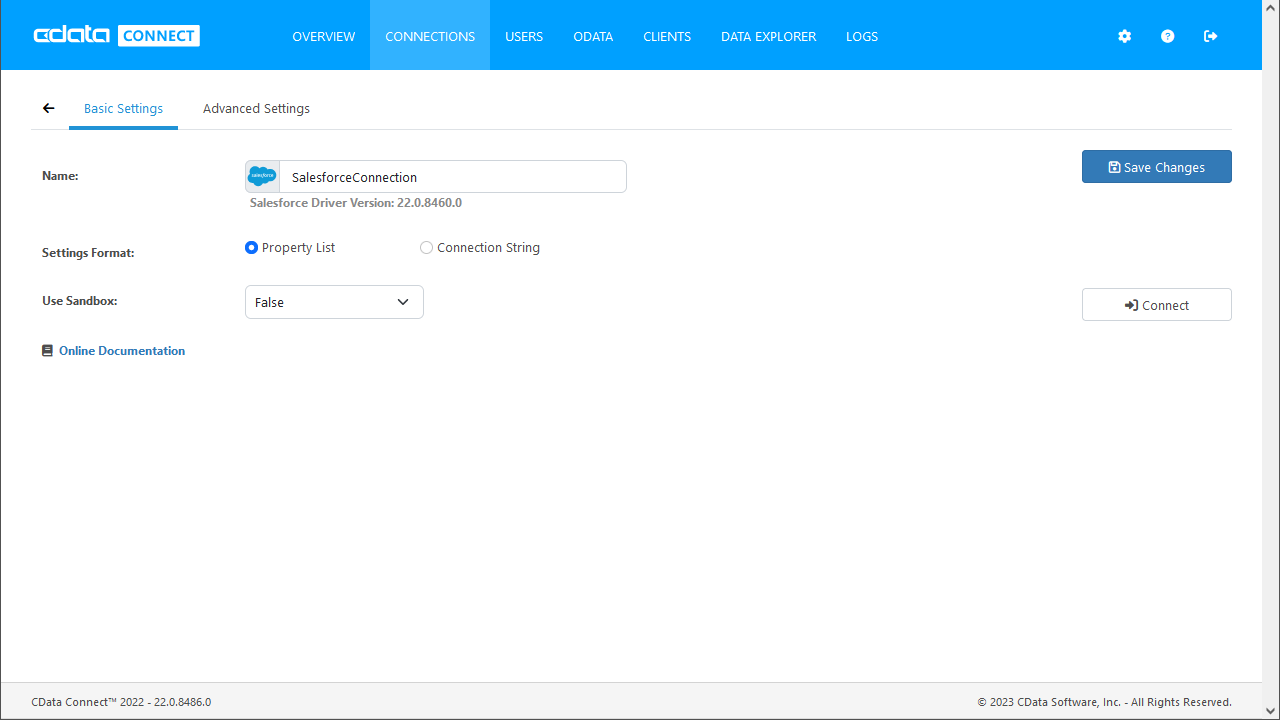Model Context Protocol (MCP) finally gives AI models a way to access the business data needed to make them really useful at work. CData MCP Servers have the depth and performance to make sure AI has access to all of the answers.
Try them now for free →Create OData Dashboards in Bold BI
Use CData Connect Server to create a virtual SQL Server Database for OData services to build custom dashboards in Bold BI.
Bold BI allows you to create, share, and collaborate on interactive BI dashboards. When paired with CData Connect Server, you get instant access to OData services for visualizations, dashboards, and more. This article shows how to create a virtual database for OData and build reports from OData services in Bold BI.
CData Connect Server provides a pure SQL Server interface for OData, allowing you to easily build reports from live OData services in Bold BI — without replicating the data to a natively supported database. As you build visualizations, Bold BI generates SQL queries to gather data. Using optimized data processing out of the box, CData Connect Server pushes all supported SQL operations (filters, JOINs, etc) directly to OData, leveraging server-side processing to quickly return the requested OData services.
About OData Data Integration
CData simplifies access and integration of live OData services data. Our customers leverage CData connectivity to:
- Access OData versions 2.0, 3.0, and 4.0, working with legacy services and the latest features and capabilities.
- Leverage advanced query options, including $filter, $select, and $expand, enhancing data retrieval from 3rd party tools.
- Use Server-side execution of aggregation and grouping to minimize data transfer and boost performance.
- Authenticate securely using a variety of schemes, including Azure AD, digest, negotiate, NTLM, OAuth, and more means secure authentication with every connection.
- Use SQL stored procedures to manage OData service entities - listing, creating, and removing associations between entities.
Customers use CData's solutions to regularly integrate their OData services with preferred tools, such as Power BI, MicroStrategy, or Tableau, and to replicate data from OData services to their databases or data warehouses.
Getting Started
Create a Virtual SQL Server Database for OData Services
CData Connect Server uses a straightforward, point-and-click interface to connect to data sources and generate APIs.
- Login to Connect Server and click Connections.
![Adding a connection]()
- Select "OData" from Available Data Sources.
-
Enter the necessary authentication properties to connect to OData.
The User and Password properties, under the Authentication section, must be set to valid OData user credentials. In addition, you will need to specify a URL to a valid OData server organization root or OData services file.
![Configuring a connection (SQL Server is shown).]()
- Click Save Changes
- Click Privileges -> Add and add the new user (or an existing user) with the appropriate permissions.
With the virtual database created, you are ready to connect to OData services from Bold BI.
Visualize Live OData Services in Bold BI
The steps below outline connecting to CData Connect Server from Bold BI to create a new OData data source and build a simple visualization from the data.
- Log into your Bold BI instance, click the data sources tab, create a new data source, and choose the SQL Server connector.
- Choose the basic configuration and set the connection properties:
- Name: Name your connection
- Server name: Your Connect Server instance (CONNECT_SERVER_URL)
- Port: 1433
- Username: Your Connect Server username
- Password: Your Connect Server password
- Mode: Choose Live to query OData on-demand or choose Extract to load the data into Bold BI
- Database: Choose the database you created from the drop-down menu (odatadb)
- Click Connect
- Select the table to visualize and drag it onto the workspace.
- Select a visualization style and add it to the report.
- Click the gear icon for the visualization to configure the visualization properties and assign columns to the visualization.
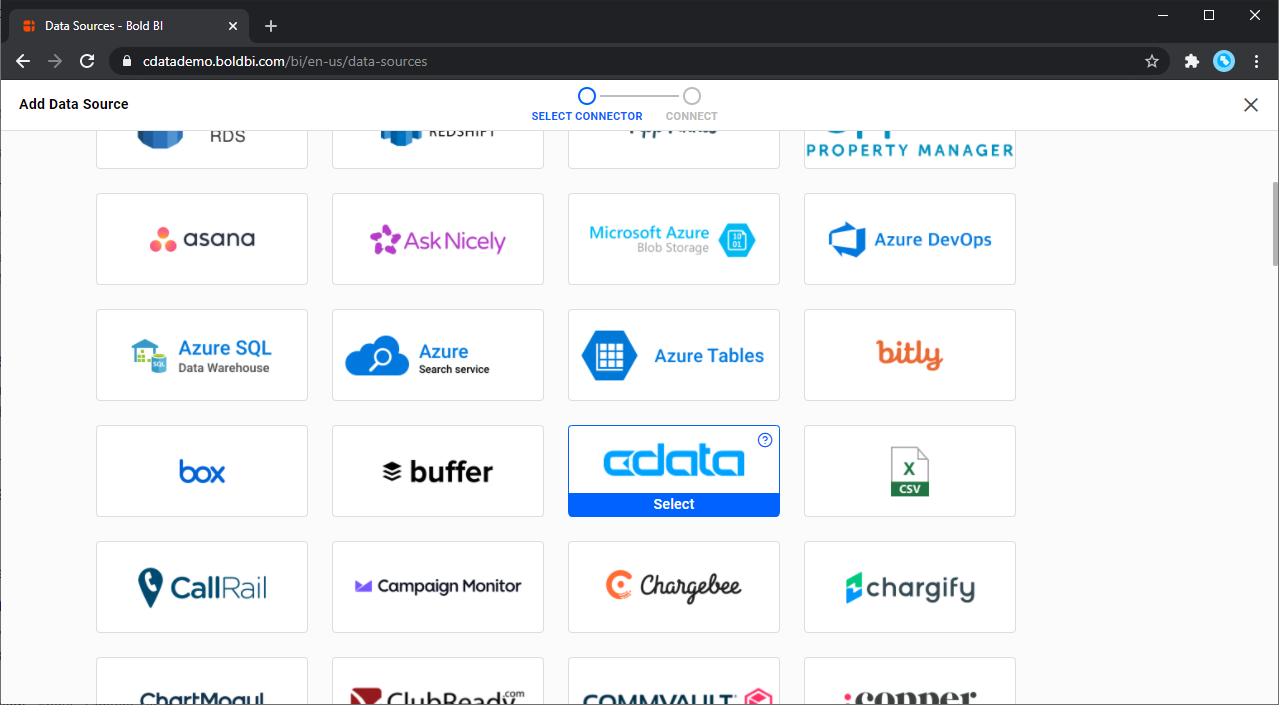
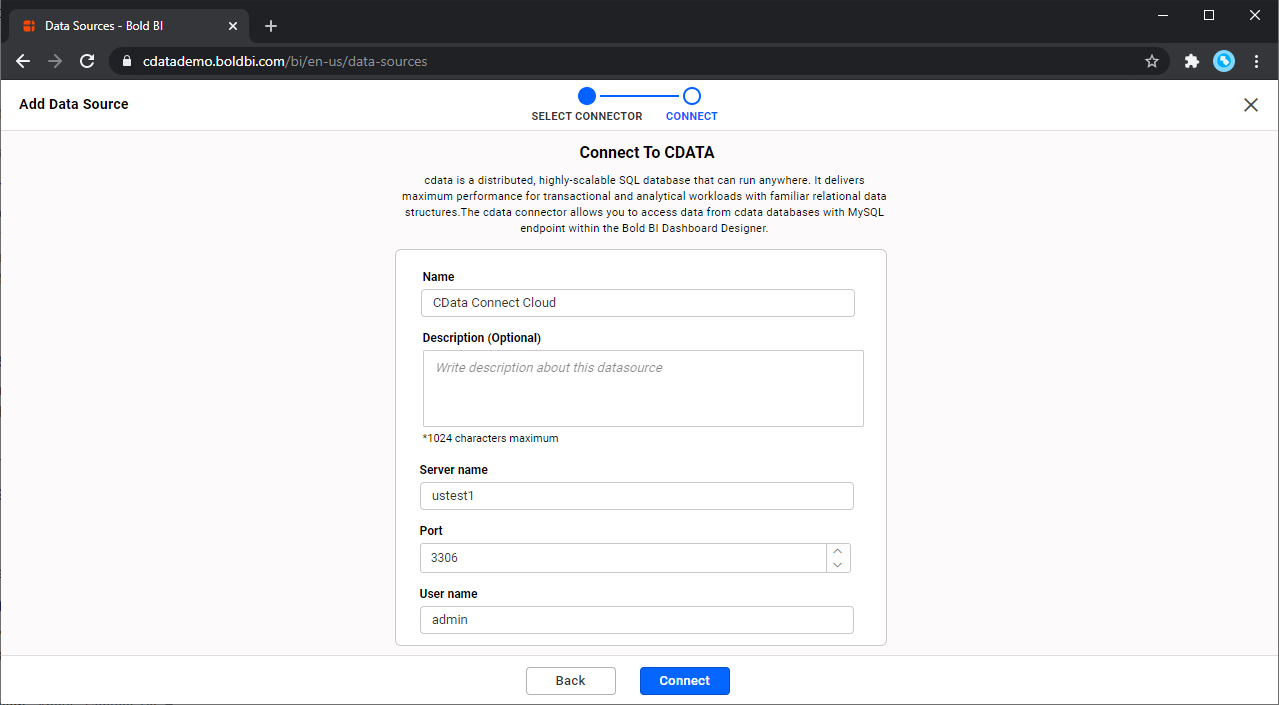
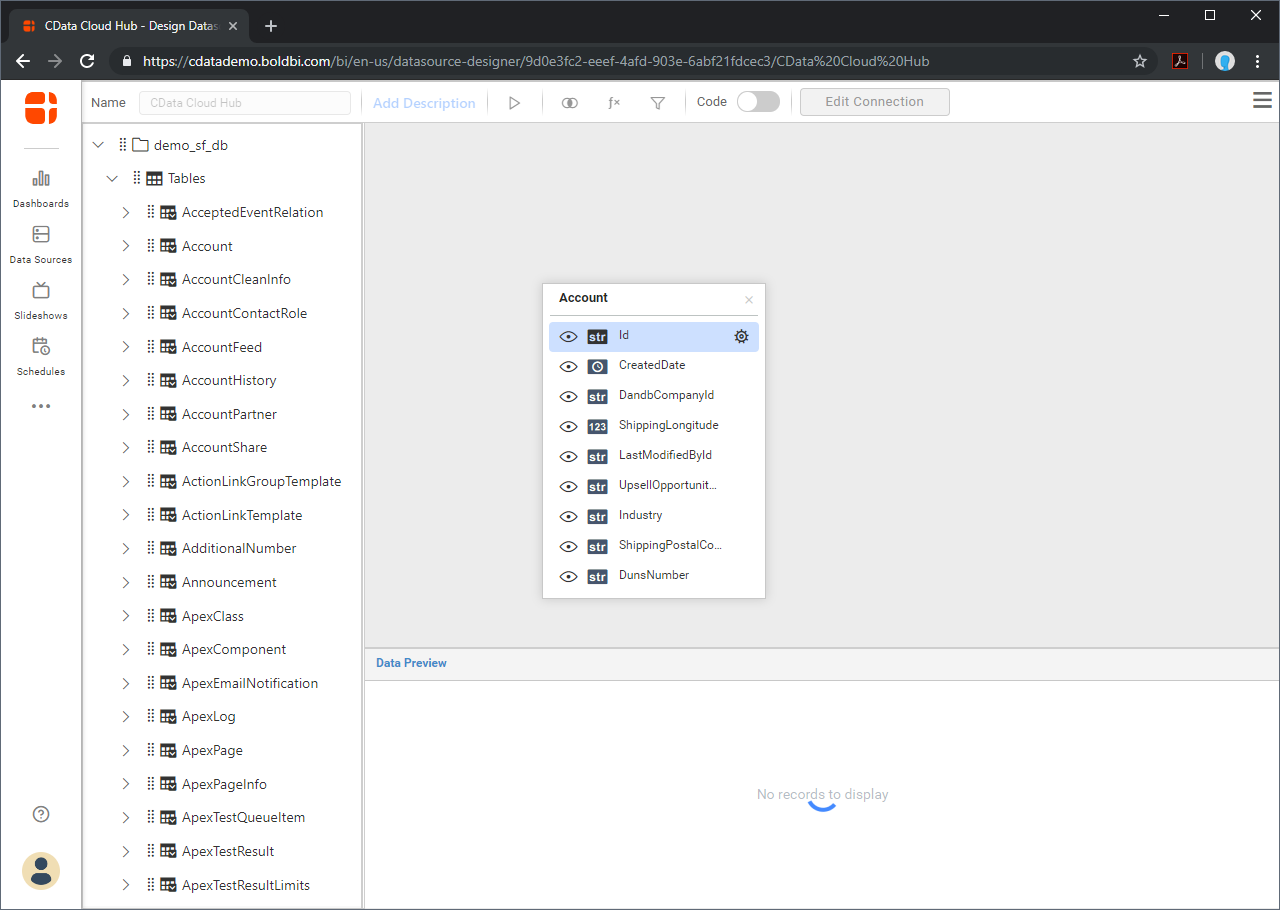
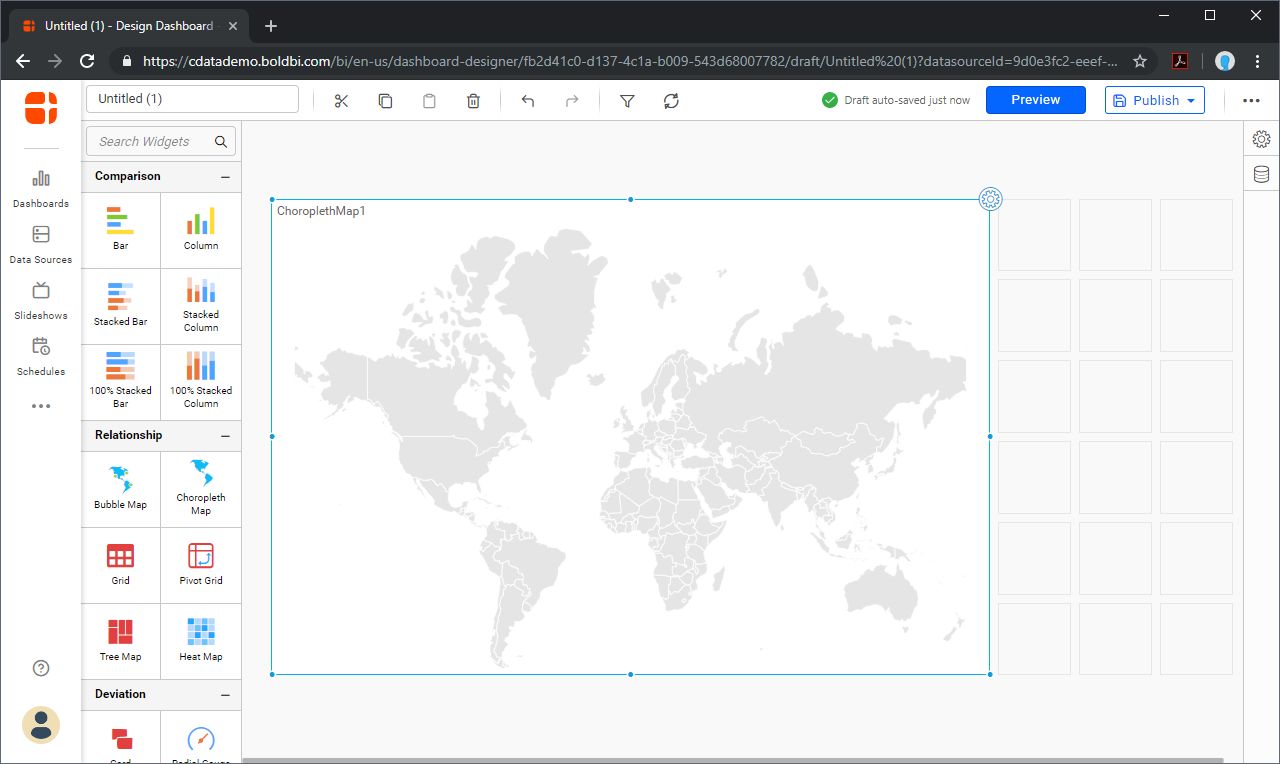
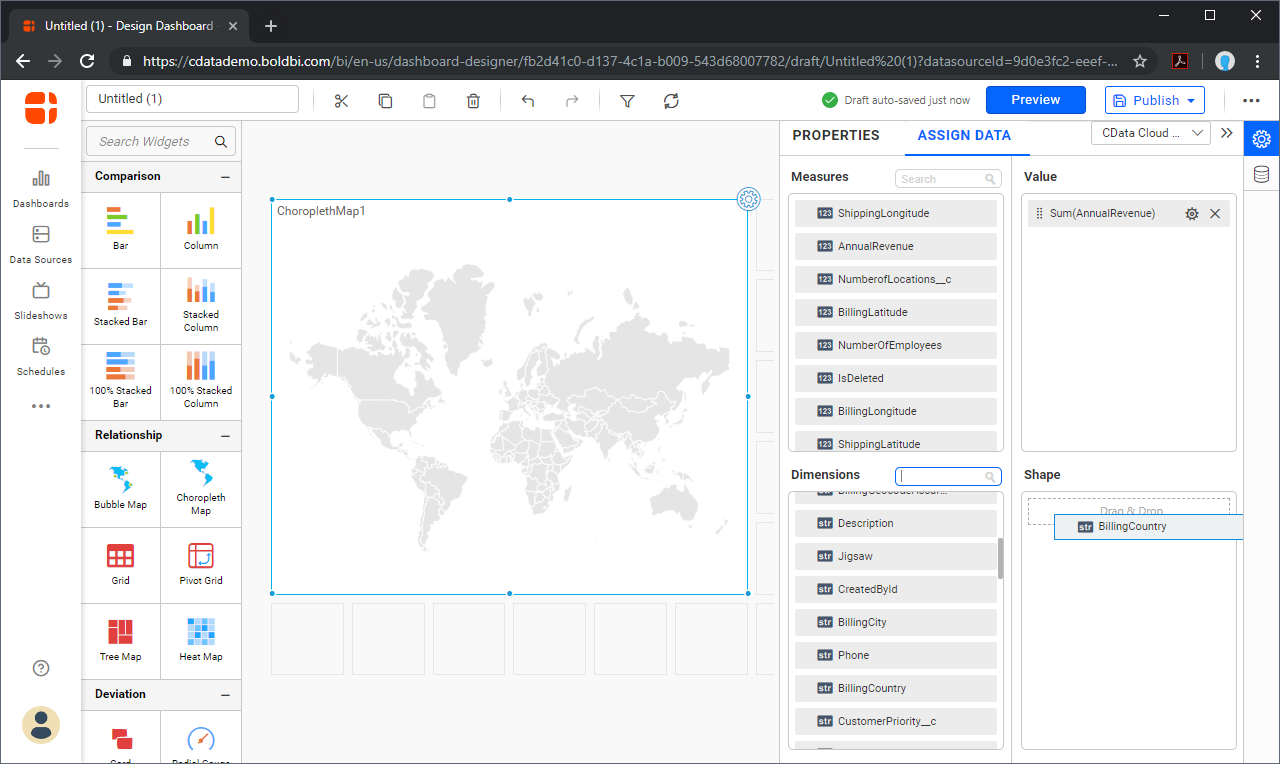
SQL Access to OData Services from Applications
Now you have a direct connection to live OData services from your Bold BI workbook. You can create more data sources and new visualizations, build reports, and more — all without replicating OData services.
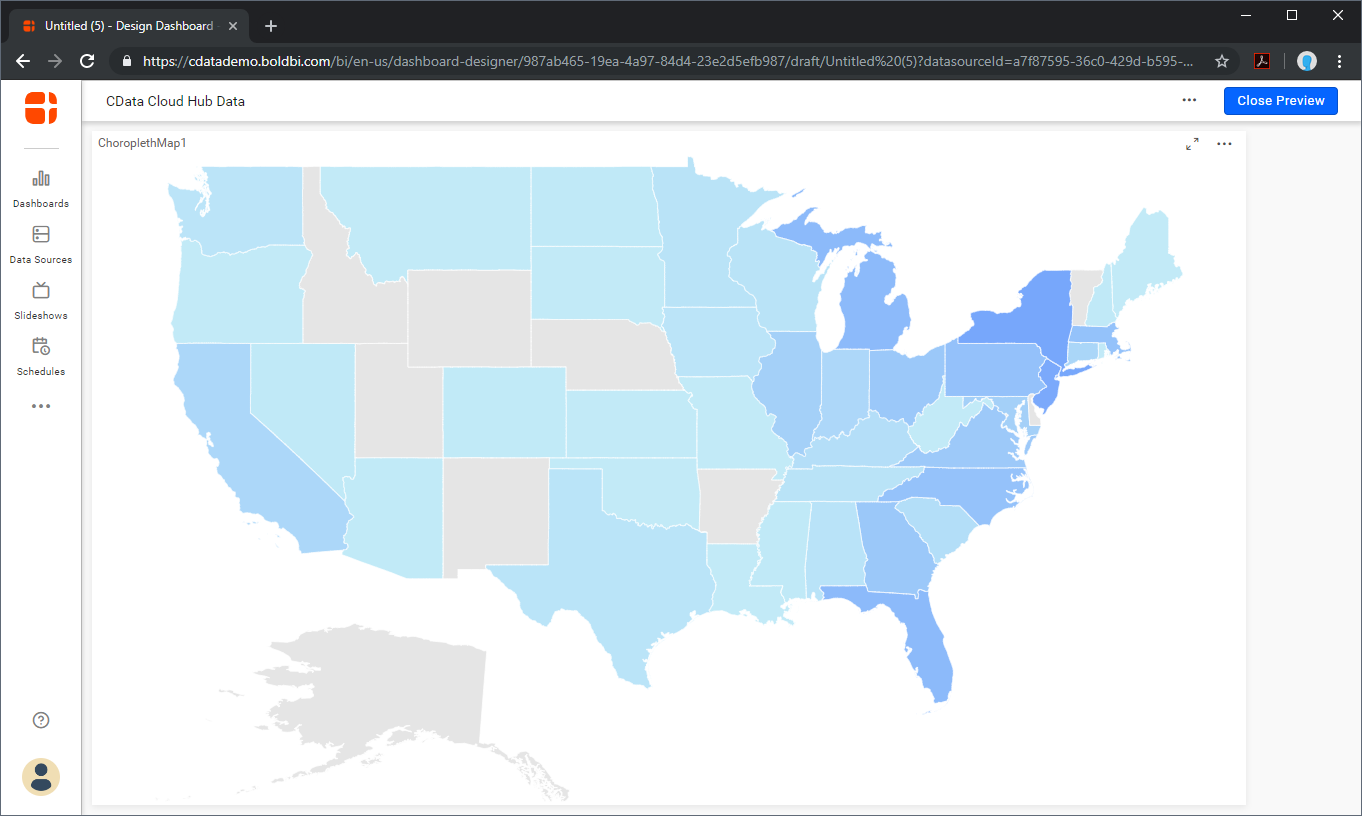
To get SQL data access to 200+ SaaS, Big Data, and NoSQL sources directly from your applications, see the CData Connect page.


